

THE ELEPHANT IN THE ROOM: Who Was Jack The Ripper?
(part 3 of a 4 part report)
“The best motto for a long march is ‘Don’t grumble. Plug on.'”
– Sir Frederick Treves, 1st Baronet
There are very few mysteries that still befuddle people quite like Jack The Ripper does. The mere mention of his name and a certain unease is felt no matter who hears it called out… for the chills sent down one’s spine is eerily reminiscent of the blood cascading on the victim’s body as each was viciously stabbed to death in the east side of London in 1888.
My independent death investigation for the Whitechapel murders have taken my readers back to the infamous slayings, reporting on the legendary unsolved homicides in a way like never before. I see The Ripper murders not as their own individual acts of homicidal savagery carried out by a mentally deranged person. I feel that these brutal killings were definitely all connected.
The reason behind the mayhem in London on a cold, rainy night 130 years ago falls at the feet of the Royal London Hospital that sat as the backdrop to bloodshed.
While my belief that Jack The Ripper was a big time devil worshiper, it has only been touched upon by a few other writers who have been working on the case over the years. Now I am ready to take the theory to a new level. Without a doubt, I also feel evidence points to a major cover up perpetuated by the London news media and Scotland Yard.
The murders of “Jack the Ripper” took place around Whitechapel and the bodies of his victims were examined at the London Hospital. Keep in mind, there was not one single homicide committed in Whitechapel the previous year in 1887.
Did you know that forensic investigations for The Ripper murders are said to have taken place at the Royal London Hospital? Yes, indeed “police consultations with doctors” from the hospital were held there, in concern with the serial killer. Guess what that tells us?
That means they interacted with Dr. Frederick Treves, head surgeon of Royal London Hospital.
In my opinion, the same person with the high level of expertise to examine the wounds of the victims is in fact the same person who inflicted the massive, surgical like cuts and executed absolutely flawless, organ removal… in the dark.
Think about it. Dr. Treves could work with his eyes closed and on very little sleep, due to his advanced medical experience. Many doctors in his time could go multiple days with little sleep to none at all, depending on the circumstances.
I believe that Dr. Treves never went back home on the evening of the first murder in Whitechapel.
He was unarguably the most famous surgeon in all of England in 1888, one who was highly respected. He was a man of impeccable standard… so immediately the doctor puts himself at the scene of the crimes once we understand that Dr. Treves was there on location in the early morning hours the next day to receive the Whitechapel victims and help study the remains.
I will prove there was no possible way he could have gone home the night before, and was definitely the only man who could have committed such heinous acts of violence against women and get away with it.
A Ripper expert helps further link the killer to a medical professional:
“He did not violate the bodies sexually and usually he took a piece of the victim’s viscera. The
taking of a “trophy” is a common practice by modern sexual serial killers. In the opinion of most
of the surgeons who examined the bodies, most believed that the killer had to have some
degree of anatomical knowledge to do what he did. In one case he removed a kidney from the
front rather than from the side, and did not damage any of the surrounding organs while doing
so. In another case he removed the sexual organs with one clean stroke of the knife.”
My theory for Jack The Ripper not sexually assaulting the women is due to the fact that the killer looked at these ladies as lesser than human, worthy of unmerciful slaughter. A person of Royal standing like Dr. Treves certainly fits the bill of someone who would have frowned upon the dirty, poor street walkers of Whitechapel in 1888. A man of such notable pedigree would most likely not engage sexually with someone he viewed as not good enough to remain alive.
Also, as I understand it, the pools of blood found around each of the victims was observed to have been formed around the head and not the feet, which indicates that they were eviscerated while lying prone. It is my determination that The Ripper struck his first two targets with a surprise attack from behind, and then once the body dropped lifeless to the ground he proceeded to disembowel them, by essentially ripping out their intestines via massive abdominal cuts.
Author Ivor Edwards put out a book on the subject, along with world famous Ripper investigator Mike Covell who wrote a novel titled Jack The Ripper – The Black Magic Myth, help us to understand how such an epic Luciferian-rigged psyop could be pulled off on the masses:
“To give an indication of how close this site is to the London Hospital, via
Woods Dwellings, it takes about 1 minute and 58 seconds to walk the 176.1m. I
have walked all the distances and measured them. Brady Street is located east of
the board school at the end of Bucks Row. From the end of Bucks Row (at the
Brady Street end) to the murder spot it is 121.6m.”
– Ivor Edwards
Mr. Covell supports my belief that Satanic Ritual Abuse is to be blamed:
“Many black magick rituals required the inclusion of horrifying substances and ingredients. From both human and animal body parts to other sinister items, this could prove to be a reason for the terrible mutilation of the victim’s bodies.”
The first victim shows all the hallmark signs of a ritual murder. As the story goes:
“The man who found the body was walking in the direction of Court Street from
Brady Street. He stated that he did not see anything until he was level with the
alcove and he was on the opposite side of the road, a distance of 10 yards. He also
stated that he thought the body was a tarpaulin. At the time of the killing, 3.30am,
any person looking down the road from either end or looking out of any window in
the row of cottages would have seen nothing.”
In the world of Satanism, the time of ritual murder being carried out during the 3AM hour is so that the coven pays homage to Satan and the demon Baal, who is specifically tied to cannibalism I learned.
There have been literally hundreds of proposed suspects in The Ripper case over the past 13 decades. The motion picture titled From Hell, starring Satanist actor/rocker Johnny Depp purports a man named Sir William Gull pulled off the slayings.
Although there are many similarities, and he does have a medical background tied to the Royal bloodline, I feel he is only being used as a plant by the Illuminati to throw everyone off the track of the real killer.
Other Ripperologists assert a doctor named Robert Donston Stephenson is The Ripper.
I disagree with them on that but feel there is undoubtedly a Satanic ritual tie-in that is crucial for someone to know when coming to terms with how to solve the legendary murder spree.
In this part of the report, I’d like to now take a closer examination now of the second victim: Annie Chapman.
Profession: Prostitute
Height: 5 feet
Hair: (wavy) dark brown
Eyes: Blue
Nose: Thick nose
Mouth: Two teeth deficient in lower jaw
Complexion: Fair
Marks or Peculiarities: On person portion of an envelope stamped ‘Sussex Regiment’ dated 23 August 1888
Dress: Black skirt and jacket, striped petticoat, crepe bonnet
BORN ELIZA ANNE SMITH, Annie Chapman was a prostitute who plied her trade at night in Spitalfields. This victim was a carbon copy of Polly Nichols (victim one) in terms of their backgrounds. Both were turned out on to the streets for having no money. For the want of a bed for the night, she lost her life.
The body was found at 6am by market porter John Davis, who lived at the address. The police investigation of the scene recovered but a few sad items of possession: two pills for a lung condition, part of a torn envelope, a piece of muslin. Annie had been seen wearing two brass rings some time before her death, but these were not found. Much speculation has surrounded the disappearance of the rings, but it is equally likely that she pawned or sold them prior to her death.
According to a UK Ripper historical site:
“At the inquest, police doctor George Bagster-Phillips described her manner of death and the injuries she sustained, as he witnessed them in the yard of 29 Hanbury Street. His testimony only survives in a report in the Times of 14th September 1888.”
Just as in the David Lynch classic “The Elephant Man”, where Joseph Merrick’s mother gets attacked by a raging beast at the circus, the victims of Jack The Ripper were trampled by a force of mayhem that they never saw coming.
“The left arm was placed across the left breast. The legs were drawn up, the feet resting on the ground, and the knees turned outwards. The face was swollen and turned on the right side. The tongue protruded between the front teeth, but not beyond the lips. The tongue was evidently much swollen. The front teeth were perfect as far as the first molar, top and bottom and very fine teeth they were. The body was terribly mutilated … the stiffness of the limbs was not marked but was evidently commencing. He noticed that the throat was dissevered deeply; that the incision through the skin were jagged and reached right round the neck … On the wooden paling between the yard in question and the next, smears of blood, corresponding to where the head of the deceased lay, were to be seen. These were about 14 inches from the ground, and immediately above the part where the blood from the neck lay.”
“The instrument used at the throat and abdomen was the same. It must have been a very sharp knife with a thin narrow blade and must have been at least 6 to 8 inches in length, probably longer. He should say that the injuries could not have been inflicted by a bayonet or a sword bayonet. They could have been done by such an instrument as a medical man used for post-mortem purposes, but the ordinary surgical cases might not contain such an instrument. Those used by the slaughtermen, well ground down, might have caused them. He thought the knives used by those in the leather trade would not be long enough in the blade. There were indications of anatomical knowledge … he should say that the deceased had been dead at least two hours, and probably more, when he first saw her; but it was right to mention that it was a fairly cool morning, and that the body would be more apt to cool rapidly from its having lost a great quantity of blood. There was no evidence … of a struggle having taken place. He was positive the deceased entered the yard alive. A handkerchief was round the throat of the deceased when he saw it early in the morning. He should say it was not tied on after the throat was cut.”
Pictured: Example of Bowel Evisceration
During the inquest, Dr. Phillips posed the theory that the murderer definitely displayed “some degree of anatomical knowledge” – an assertion which was used for example, when another suspect named George Chapman was suggested due to his medical training in Poland.
As I investigate a murder spree dominated by the art of disembowelment, I recall the great story of Saint Erasmus, who was persecuted for his faith in Christ and working against the devil and his army of demons to save as many souls as possible. He was tortured and has become known as a martyr. He is forever venerated as the patron saint of sailors and abdominal pain.
“During these black days, Catholics were found and brought to the emperor’s pagan judges, so that they might be bribed or threatened into abandoning their Faith. Those heroes who, by God’s grace, stood firm against the fury of hell and held to Catholicism, were then tortured and killed. This was done as a punishment to them and as a threat to their fellow Catholics.
So, after this persecution broke out, St. Erasmus fled to protect his life and his faith. He hid in the mountains of Libanon.”
“There he spent years in prayers, fasting, and other mortifications. In this way, he earned graces and strength for himself, his diocese, and all the other members of the Church. When God knew that St. Erasmus was strong enough, He allowed the pagans to find the saint. They immediately forced him out of his hiding and brought him before a pagan judge.”
“At first, kind and persuasive words were addressed to the Bishop. But God’s grace was with St. Erasmus, and no offer or bribe could make him deny his Faith. And so, the judge made use of another means. St. Erasmus was condemned to be tortured to death. His body was torn by scourges. After this torment, the martyr was thrown into a caldron filled with boiling oil, sulphur, and pitch. But God used this malice to His own glory by protecting the saint in a marvelous way. Immersed in the caldron, St. Erasmus was completely unharmed by it. Instead of driving the faithful away from Catholicism, this amazing scene brought many pagans to embrace this Faith.”
According to Catholic Kingdom site:
“Tragically, the judge was not among these converts. In his rage, the judge ordered the holy bishop to be thrown into prison and kept there in chains till he died of starvation. On one night of this captivity, St. Erasmus was consoled by an angel, not unlike the one that delivered St. Peter.”
This heavenly liberator exclaimed:
“Erasmus, follow me! Thou shalt convert a great many.”
“Erasmus, come now to the heavenly city and rest in the place which God has prepared for thee with the holy martyrs and prophets. Enjoy now the fruit of thy labor. By thee I was honored in heaven and on earth.”
St. Erasmus looked up toward heaven, where he saw a splendid crown, and the apostles and prophets welcoming him. He then bowed his head, saying:
“Receive, O Lord, the soul of thy servant!” as he peacefully breathed forth his soul on June 2, 308.
“It’s hard to know which miracles were greater in the life of St. Erasmus – the deviations to the laws of nature, or the strength to endure excruciating torments without failing in his Faith. All of these stupendous events were used by God to save countless souls from being lost and tormented forever.”
Pictured: Annie Chapman
A historical blog takes us back:
“Thomas Bond, one of the forensic examiners of the Whitechapel murders, outlined a criminal profile of the killer: “It is very probable that the murderer has a harmless appearance, a man of middle-aged, well-groomed and respectable air. Possibly wears a coat, for if not, the blood on his hands and clothes would have caught the eye.”
Many critics of the original investigation, such as myself, point to racism committed by the lead investigator (when he calls out a “Jew” as the best possible type who could have committed the murders at the time) and no real forensic analysis performed on the scene, as to being the main reasons why the murders were never solved.
It’s actually quite laughable when taking into consideration this unsolved serial killer rampage happened in the backyard of the esteemed Scotland Yard, who at the time, were regarded as one of the world’s finest forensic pioneers.
My dissertation will prove collusion existed between Scotland Yard’s lead investigator on The Ripper murders investigation and one of the most important men in England in 1888… the head surgeon of Royal London Hospital: Dr. Frederick Treves.
I will conclude the final two parts of this report with a wonderous flourish, bringing into sharp focus the monster behind the blade. The evidence I will present is going to convince even the most skeptical that there is only one person who could have pulled off performing in the real-life role of Jack The Ripper back in 1888.
The original building for Royal London Hospital is closed today. A new 650-million-dollar facility was built next to it which opened its doors in 2012. So, all that there is left to go on now is pictures of the old location that have been posted online. If you have the time, a video has been posted HERE that takes you on a guided tour of the interior of the old building at the time of its closure. It will give you the same exact view Joseph Merrick would have had as he made his way down the haunting corridors back in 1888. You’ll get the sense of its ominous mystique, being it was ground zero for The Ripper slayings, undoubtedly the most frightening homicides ever unleashed on the world.
When Jack The Ripper tore apart 5 innocent women in London, he caused terror and panic not just in the streets of Whitechapel, where the blood from his blade flowed like red wine, a drink favored by the elite in England, his reign of true horror supremacy still rules everywhere around the world where one can find a dark street.
A Ripper expert conveys the sadistic killer as being one who dabbles in the mystical art of black magick.
John Francis Brewer wrote the first known text about the Ripper murders in October of 1888, a sensational horror monograph entitled The Curse upon Mitre Square.
In it, Brewer blended fact and fiction, writing that “the Whitechapel murderer the inheritor, or even perhaps the victim of, an ancient curse that hung over Mitre Square.”
This was the location where the victim, Catherine Eddowes, had been found the month before.
According to Brewer, the curse originated from the murder of a woman in 1530 by her brother, a ‘mad monk’, on the steps of the high altar of the Holy Trinity Church in Aldgate. The monk, Martin, committed suicide, realizing what he had done, and his ghost now appears pointing to the place where the murder occurred, promising that other killings will follow.
In Brewer’s work, Jack’s distinctive style of murder is dictated by the curse; Martin killed his sister “in a fit of passion, ripped the body open and cast the entrails all around.”
Catherine Eddowes was discovered at the exact same spot where the steps of the high altar stood.
“Samuel E. Hudson’s book Leather Apron; or, the Horrors of Whitechapel, London, was published in December, 1888. Hudson writes Jack as a Gothic monster, an atavistic and savage creature prowling Whitechapel to satisfy his bloodlust. Jack is associated with several Gothic tropes in Hudson’s work and described as different types of monsters. Hudson calls Jack: a “fiend bearing a charmed and supernatural existence,” a “human vampire”, an “incarnate monster” and the perpetrator of “ghoulish butchery.”
The worldwide “Jack The Ripper” mania is a definite phenomenon, to the likes that has never been seen before. Doesn’t that bring up the question of ‘ethics’ and perhaps making a tragedy something that is trivial and used for commercial benefit?
Taresa Farfan sets the scene for us back in 1888.
“The killings took place within a mile area and involved the districts of Whitechapel, Spitalfields and Aldgate. He was called the Whitechapel Murderer before a letter was received by the Scotland Yard which claimed to have been written by the
murderer himself. The signature on the letter read “Jack The Ripper”.”
Much of the original evidence gathered at the time has been lost, and many “facts” are actually opinions by the various writers who have written about the case during the past century.
There is Jack The Ripper tours, memorabilia, books, songs, movies that pay homage to the yet to be identified serial killer.
I believe I have finally identified that man. His name is Dr. Frederick Treves.
I have determined that the killer used the Royal London Hospital to clean off all the blood. This would also be the location of the dismemberment kit, so it can be cleaned off properly as well with ease and then put back in its normal spot.
It is also my assertion that Jack The Ripper could NOT use a vehicle to flee the area.
Due to the fact that the world’s first production car with some 1200 units built called the Benz Velo did not happen until 1894, the horse and buggy was the typical means of transportation. The subway and the trolley came later, respectively in 1906 and the 1930s. Generally, all of these modes of travel stop in the middle of the night. Since there was no personal auto, he could have possessed at this time, and he lived too far away to walk without being stopped by authorities, in my opinion, Dr. Frederick Treves would have had no choice but to use Royal London Hospital as his base of operations… so he could not be detected by anyone after the killings.
With the rain pouring hard and it being such an off operating hour, any logical person can see that there would be no horse drawn buggy service available to The Ripper. Plus, he would have appeared way too suspicious had he taken such a ride.
“Early public transport in London began with horse-drawn omnibus services in 1829, which were gradually replaced by the first motor omnibuses in 1902”
I dug deeper and discovered the doctor lived in an upscale section of London about a 30-minute drive away from the hospital.
When examining the background of Dr. Frederick Treves, one can see the occult/royal masonic connection is irrefutable.
“Another key piece of evidence which supports this theory is the fact that the locations of the murders form a cross when outlined on a map, with connecting lines drawn between the sites. While this may first appear to be a rather tenuous link, the defamation of holy and religious symbols like the cross was another big part of black magick.”
It is my determination, along with author and historian Mike Neville, that Jack the Ripper most certainly had a connection to freemasonry.
Mr. Neville established Masonic links to Scotland Yard and I believe that is very important, in terms of being able to look at the bigger picture and not just what is right in front of your face. In his book titled “Crime & The Craft”, he explores the tie in.
“Crime and the Craft: Masonic Involvement in Murder, Treason and Scandal reveals the Freemasons who have been involved in murder, treason, skulduggery and scandal from the time of the English Civil War to the 1980s. Nearly every infamous case investigated by Scotland Yard, including Jack the Ripper, Oscar Wilde, Dr Crippen, the Great Train Robbery and Kray twins, is shown to have Masonic involvement…”
While he claims a man named Kenneth Noye is the strongest suspect, I again disagree, but feel that a lot of his ideas on the case are spot on correct.
In the first two parts of this report, I detailed the sad and tragic life of Joseph Merrick AKA “The Elephant Man” who took residence at the Royal London Hospital in 1886 and remained there living in the basement until he died in 1890.
Under the care of renowned surgeon, Dr. Frederick Treves, Joseph Merrick left the freak show only to be turned into an even bigger attraction at London’s biggest Hospital at the time. At one time, Dr. Treves was a high-ranking Red Cross official, which is key in understanding how he could potentially be Jack The Ripper.
Treves was a pioneer in abdominal surgery, one of his most famous operations being to treat Edward VII for appendicitis in 1901 two days before the King’s coronation. Treves, who was made a baronet in 1902, is credited with carrying out the first appendectomy in England in 1888. Oddly enough, that same year is when a purported madman hacks, disembowels and dismembers 5 women in Whitechapel while Dr. Treves is working at Royal London Hospital.
An expert in the art of assassination explains how The Ripper would have struck his victims by surprise attack:
“Draw the blade across the throat at the level of the cricoid cartilage, beginning at the hilt and stroking to the tip. This attack slits the trachea, preventing any sort of outcry; then cuts deeper, severing the carotid sheath. The sentry dies within twelve seconds due to lack of oxygen starvation of the brain. Unconsciousness occurs within five seconds.”
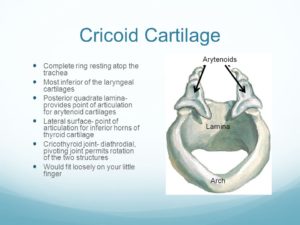
In his own words, Dr. Treves describes his early life while serving in war. Major Frederick Boileau Treves was a member of the Royal Army Medical Corps:
“The South African War, of which this Tale is told, is already near to be forgotten, although there are many to whom it still remains the most tragic memory of their lives. War is ever the same: an arena, a glare with pomp and pageant, for the display of that most elemental and most savage of human passions, the lust to kill, as well as a dumb torture place where are put to the test man’s fortitude and his capacity for the endurance of pain.”
FREDERICK TREVES.
THATCHED HOUSE LODGE,
RICHMOND PARK, SURREY.
November, 1912.
Looking at one of his last known addresses, it’s clear to see that Dr. Treves resided in a British royal residence occupied by members of the British royal family in the United Kingdom. The Crown Estate is a collection of lands and holdings in the UK belonging to the British monarch.
Pictured: Example of up/down incision from appendectomy surgery
The exact up/down cuts with a blade that would be made during an appendectomy surgery are inflicted among the many wounds to the victim’s stomach area. Compare the wounds of the first Ripper victim, Polly Nichols, illustrated in the below diagram.
Sir Frederick Treves passed away on December 7, 1923, at the age of 70, in Lausanne, Switzerland.
In a cruel twist of fate, it was peritonitis that caused his death. In the days before antibiotics, peritonitis typically resulted from a ruptured appendix.
“I am not an animal! I am a human being!
During the last World war, staff from the Tavistock Clinic were said to have filled key roles in British Army psychiatry. Joined with their colleagues in the Royal Army Medical Corps and the British Army, they were ultimately responsible for the innovation of psychological warfare.
In my opinion, The Ripper was a British government psyop carried out on the citizens of London, to serve as a mind control weapon. This was the birth of the serial killer.
A very similar thing happened in the infamous “St. Valentine’s Day Massacre” back in the 1920s in Chicago, Illinois, where I was born. My family was connected to legendary gangster Al Capone, and I was made privy that it was an inside job pulled off by the police. It was done to turn the public against Mr. Capone who had grown too popular for their liking. I wrote a feature length screenplay titled “Public Enemy Number One”. It is copyrighted and available for viewing on Scribd if you’re interested in learning the truth.
The main piece of incriminating evidence in The Ripper case hangs on the wall at the Royal London Hospital museum today, believe it or not.
As I explained previously, Sir William Blizzard was a surgeon at the Royal London Hospital in the 1700s and he kept on location what is called a surgical dismemberment kit. It always remained at the hospital. If this was indeed the only device of its kind within a one square mile radius, that means it would be the only weapon that could inflict the jagged and long wounds on the victims.
Who was the only person at that time who would have had access undetected?
That person is Dr. Treves.
Why wasn’t this kit that contained all these different surgical cutting blades be tested by a forensic expert?
I mean, Henry Goddard at Scotland Yard pioneered the use of bullet comparison in 1835.
It’s said that he “noticed a flaw in the bullet that killed the victim and was able to trace this back to the mold that was used in the manufacturing process.”
“A French police officer named Alphonse Bertillon was the first to apply the anthropological technique of anthropometry to law enforcement, thereby creating an identification system based on physical measurements. Before that time, criminals could only be identified by name or photograph. Dissatisfied with the ad hoc methods used to identify captured criminals in France in the 1870s, he began his work on developing a reliable system of anthropometrics for human classification.”
“Bertillon created many other forensics techniques, including forensic document examination, the use of galvanoplastic compounds to preserve footprints, ballistics, and the dynamometer, used to determine the degree of force used in breaking and entering. Although his central methods were soon to be supplanted by fingerprinting, “his other contributions like the mug shot and the systematization of crime-scene photography remain in place to this day.”
I know that no test was done on the Blizzard dismemberment kit. You want to know how I know that? Because it would not have been allowed to be put on display for the public after the fact, had it ever actually been entered into a criminal investigation as evidence.
Looking more closely at the kit, it looks like the ideal instrument one would use to saw off women’s body parts, just like what happened during The Ripper murder spree in 1888. And the only person who would have had the expertise in how to use these cutting devices located within the dismemberment kit is none other than Dr. Frederick Treves.
The only person in and around the Royal London Hospital in 1888 with access to this dismemberment kit would be only one individual, and that is the head surgeon of the hospital: Dr. Frederick Treves.
The Ripper would have been most likely dressed in an overcoat with top hat due to the rainfall. I believe that he carried a doctor’s medical bag that allowed him to conceal the main piece in his arsenal: a surgical amputation saw.
Pictured: 19th century surgical saw
Did you know that the Royal London Hospital Museum keeps a dismemberment kit on display that was never tested for DNA when the Whitechapel slayings happened?
As I stated previously, the person who committed these horrific murders had to have tremendous knowledge of the layout and design of the confusing, maze-like streets in the district of Whitechapel. It would therefore NOT be a new immigrant as was first suggested by Scotland Yard.
No, the man responsible for these London murders was right in front of everyone… it’s just that nobody in the investigation dared to question Dr. Treves about his potential involvement.

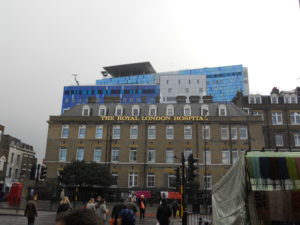
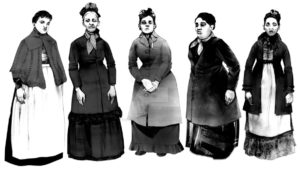
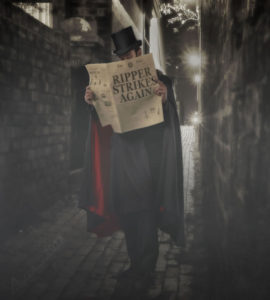
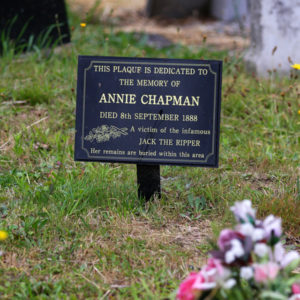
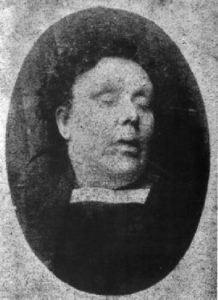
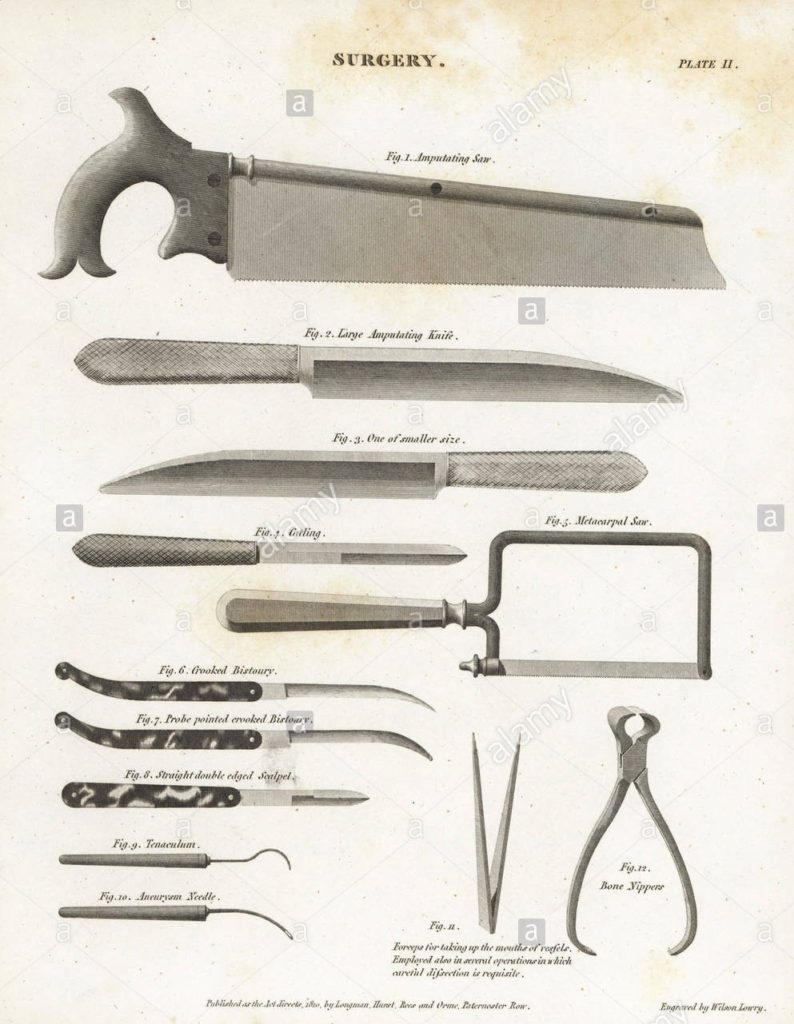
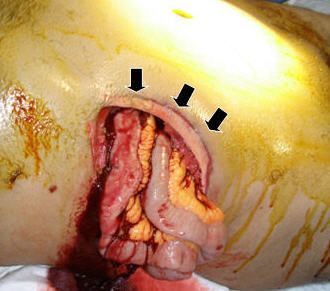
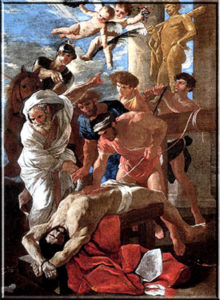
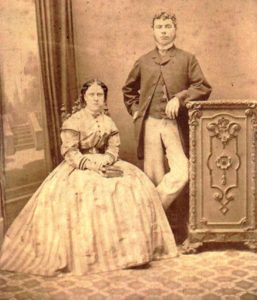
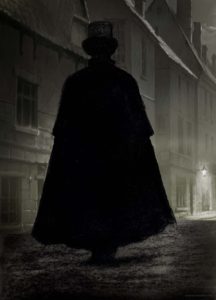

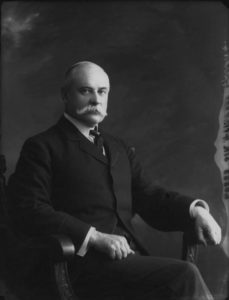

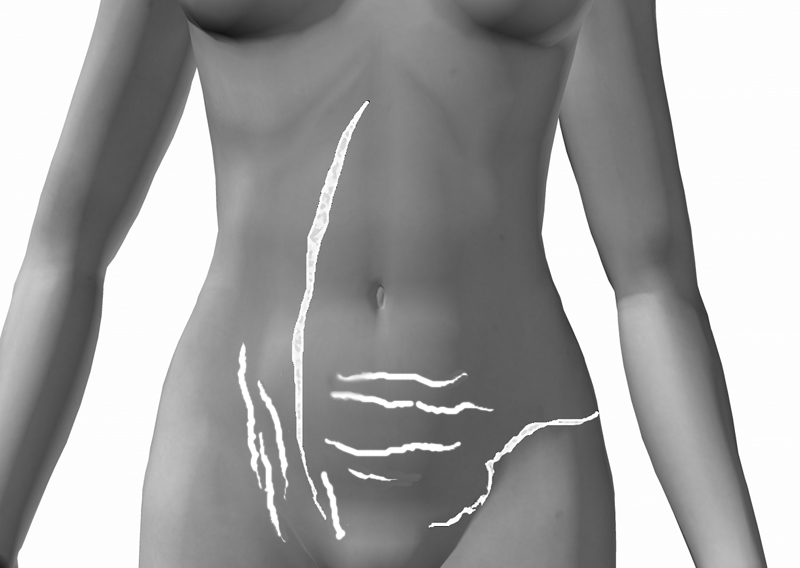






More Stories
Vince Neil Plane Crash: Another ‘PsyOp’ Designed to Mock Christians, the Satanic Connection with Sacrifice & Duality
Diddy’s Main Man Tommy Lee: “Hatched Plot to Kill Jeffrey Epstein” Over A Decade Ago, Says Industry Insider
Damning Allegations by Mick Mars Against MÖTLEY CRÜE Unveiled: “The worship of Satan corrupted my ex-bandmates!”